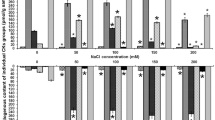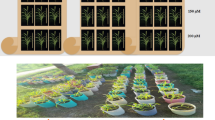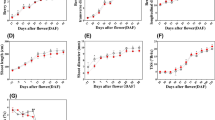Abstract
FRAGMENTS of young stem tissue of Helianthus annuus (L.), when cultured on a nutrient medium containing 2 per cent sucrose and mineral salts, are capable of making only a limited amount of growth, chiefly confined to the production of a pad of callus tissue on the cut surface. Such cultures have been shown to respond in various ways to certain plant hormones. Root production results from the addition to the medium of one part per thousand million of such substances as indole acetic, indole butyric or naphthalene acetic acid to the agar on which such stem fragments are cultured. The type of root growth varies with the hormone used1. Higher concentrations of these substances cause a characteristic proliferation of the stem tissue. These reactions have already been used to demonstrate the presence of indole acetic acid in commercial penicillin. The crystalline penicillins G and X were shown to have root-initiating properties by this means, but to differ from indole acetic acid in that they failed to induce the same characteristic cellular proliferation at high concentration2. The reactions have also led to the detection of growth-substances in bacteria-free crown gall tissue.
This is a preview of subscription content, access via your institution
Access options
Subscribe to this journal
Receive 51 print issues and online access
$199.00 per year
only $3.90 per issue
Buy this article
- Purchase on SpringerLink
- Instant access to full article PDF
Prices may be subject to local taxes which are calculated during checkout
Similar content being viewed by others
References
de Ropp, R. S., Amer. J. Bot., in the press.
de Ropp, R. S., Nature, 158, 555 (1946).
Author information
Authors and Affiliations
Rights and permissions
About this article
Cite this article
DE ROPP, R. Sunflower Stem Cultures for the Detection of Plant Hormones. Nature 159, 606 (1947). https://doi.org/10.1038/159606a0
Issue date:
DOI: https://doi.org/10.1038/159606a0



